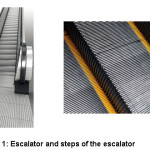Sergio Baragetti
Computational Mechanics Director GITT – Centre on Innovation Managment and Technology Transfer, Università degli Studi Bergamo Via Salvecchio 19, 24129 Bergamo (Italy).
Corresponding Author E-mail: sergio.baragetti@unibg.it
DOI : http://dx.doi.org/10.13005/msri/150306
Article Publishing History
Article Received on : 19/10/2018
Article Accepted on : 10/12/2018
Article Published : 12 Dec 2018
Plagiarism Check: Yes
Article Metrics
Copy the following to cite this article:
Baragetti S. Scientific Research Progression- A Timeline. Mat.Sci.Res.India;15(3).
|
Introduction
Scientific Research followed the history of men in every century. Only in the recent centuries, in particular the XVII century, Scientific Research was approached with a quite systematic method: the Scientific Research method. Galileo Galilei and René Descartes defined the fundamentals of the new method.1-2 Galilei wrote “Discorsi e dimostrazioni matematiche intorno a due nuove scienze (Two new Sciences)”2 while René Descartes wrote “Discours De La Methode – pour bien conduire sa raison, et chercher la verité dans le sciences Plus la Dioptrique, les Meteores, et la Geometrie qui sont des essays de cete Methode”. They established the new method that needs both mathematical analyses and experimental confirmation of the results. Earlier, in the Renaissance, Leonardo Da Vinci did the same work: design, calculation and experimental validation.
So, what’s new today in Material Science Research? Notwithstanding the method of Leonardo, Galilei and Descartes is still actual and powerful, something new came to help researchers recently. I am not thinking of failure analyses that do not need any tool other than a good laboratory equipment and experitise. I think about atomistic simulation, as an example.3 The novelty is the numerical method via computer or purposed developed codes. The numerical method is between mathematical modelling (i.e. differential equations, limits and integrals) and experimental validation. Structural mechanics allows to reach good results in material science but has a limit. Here is an example: I am Professor of Machine Design, Structural Mechanics and Computational Mechanics and I tell my students, in all my courses – Machine Design I, Machine Design II, Computational Mechanics – that differential equations allow to study materials and structures, but they have a inner intrinsic limit. An example: the fourth order differential equation that allows to solve the stress-strain and displacement problem of the escalator step is not always solvable in closed form (figure 1).
Figure 1: Escalator and steps of the escalator
The problem has really not a simple solution because we are talking about an orthothropic behaviour of the component for which mathematics reach the limit. After the first mathematic calculations, that allow to have the order of magnitude of the results, engineers nowadays use numerical methods, such the FEM – Finite Element Method or the BEM – Boundary Element Method or the finite differences method.4,5 Is some materials science problems also CFD – Computational Fluid Dynamics might help.6 The method might help in simulating corrosion problems with recirculation of the corrosive media.
So, the new method, the “today” method, relies on mathematical modelling, numerical simulation and experimental validation and the novelty is the numerical simulation. Such device and tool was not available in the Renaissance and in the XVII century.
Furthermore Scientific Research if divided into three branches: immediate (or short time) Scientific Research, middle time Scientific Research, basic (or long time) Scientific Research. In materials science the short time Scientific Research can be the failure analysis: the researcher uses microscopes, steroscopic microscopes, metallurgical tools and devices, X-ray diffrattometry, TEM – Transmission Electronic Microscope, SEM – Scanning Electronic Microscope. The tools are powerful and give results in rather short times. Surely the expertise of the researcher is needed. The problem is that often such analyses do not allow to reach any progress, apart solving the failure problem and detect the failure sources. Middle term research allows to deepen into the problem, takes much more time and gives new scientific results that can be used to build the steps toward long time research, the basic research. Basic research takes always years and is the only one that gives the real novelties. But it takes time.
References
- René Descartes. “Discours De La Methode – pour bien conduire sa raison, et chercher la verité dans le sciences Plus la Dioptrique, les Meteores, et la Geometrie qui sont des essays de cete Methode”, Editor Ian Maire, Leida (Holland). 1637.
- Galileo Galilei. “Discorsi e dimostrazioni matematiche intorno a due nuove scienze (Two new Sciences)”, Editor Ludovico Elzeviro, Leida (Holland). 1638.
- Veronika Brázdová, David R. Bowler. “Atomistic Computer Simulations: A Practical Guide”, Wiley‐VCH Verlag GmbH & Co. KGaA. 2013.
- Zienkiewicz O. C, Taylor R. L. “The Finite Element Method, McGraw-Hill Book Company, (Great Britain). 1989.
- Bathe K. J. “Finite Element Procedures” Prentice Hall (New Jersey). 1996.
- John D. Anderson Jr. “Computational Fluid Dynamics”, McGraw-Hill Education. 1995.

This work is licensed under a Creative Commons Attribution 4.0 International License.
 Material Science Research India An International Peer Reviewed Research Journal
Material Science Research India An International Peer Reviewed Research Journal




